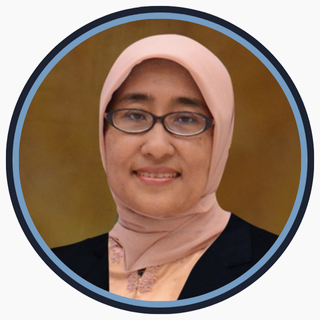SOCIOECONOMIC INEQUALITIES, WATER, SANITATION, HYGIENE AND DIARRHEAL DISEASE AMONG CHILDREN UNDER FIVE YEARS IN INDONESIA
Ketimpangan Sosial Ekonomi, Air, Sanitasi, Kebersihan dan Penyakit Diare Pada Anak di bawah Lima Tahun di Indonesia

Downloads
Background: Diarrheal diseases are still a serious digestive tract infection in Indonesia. The geographical areas with lower socioeconomic inequalities and water, sanitation and hygiene (WASH) contribute to incline diarrheal disease among children under 5 years old. Purpose: This study aimed to map the distribution of diarrheal diseases among children under 5 years old and identify areas with higher risk in socioeconomic status and WASH. Methods: This study used secondary spatial data repository from Indonesia Demographic Health Survey 2017. This study used ecological approach to provide visual geographic distribution of diarrheal diseases among children under 5 years old, as well as to identify the risk based on the socioeconomic inequalities and WASH. The map production was performed by GIS software. Results: We found that provinces with higher percentage of diarrheal diseases in children also had higher percentage of population with the lowest socioeconomic status. Additionally, the provinces which had higher unimproved drinking water sources, unimproved sanitation facility, and limited handwashing facility, had the higher percentage of diarrheal disease among children under 5 years. Conclusion: The percentage of the lowest socioeconomic status and unimproved WASH might contribute to incline the percentage of diarrheal disease among children under 5 years. The government needs to consider the geographical area to decrease the diarrheal diseases among children under 5 years.
WHO. Diarrhoeal disease. 2017.
Pencegahan D, Pengendalian D, Menular P, Kesehatan K. Laporan kinerja 2022. 2022;
Troeger C, Blacker BF, Khalil IA, Rao PC, Cao S, Zimsen SR, et al. Estimates of the global, regional, and national morbidity, mortality, and aetiologies of diarrhoea in 195 countries: a systematic analysis for the Global Burden of Disease Study 2016. Lancet Infect Dis. 2018 Nov;18(11):1211–28.
Troeger C, Khalil I, Rao P, Cao S, ... BB-J, 2018 U. Rotavirus vaccination and the global burden of rotavirus diarrhea among children younger than 5 years. jamanetwork.com. 2018;
Reiner RC, Wiens KE, Deshpande A, Baumann MM, Lindstedt PA, Blacker BF, et al. Mapping geographical inequalities in childhood diarrhoeal morbidity and mortality in low-income and middle-income countries, 2000-17: Analysis for the Global Burden of Disease Study 2017. Lancet. 2020 Jun;395(10239):1779–801.
Merid MW, Alem AZ, Chilot D, Belay DG, Kibret AA, Asratie MH, et al. Impact of access to improved water and sanitation on diarrhea reduction among rural under-five children in low and middle-income countries: a propensity score matched analysis. Trop Med Health. 2023;51(1):36.
United Nations. Water and Sanitation - United Nations Sustainable Development Goals. 2023.
Kurniawati MR, Astutik E. Socioeconomic factors associated with diarrhea among children under five years in Indonesia. J Berk Epidemiol [Internet]. 2023;2(11):170–9. Available from: https://e-journal.unair.ac.id/JBE/article/view/29502
Hernández-Vásquez A, Vargas-Fernández R, Turpo Cayo EY. Determinants, inequalities, and spatial patterns of diarrhea in the Peruvian under-five population: findings from nationally representative survey data. Front public Heal. 2023;11:1170670.
Almasi A, Zangeneh A, Ziapour A, Saeidi S, Teimouri R, Ahmadi T, et al. Investigating global spatial patterns of diarrhea-related mortality in children under five . Vol. 10, Frontiers in Public Health . 2022.
Saravana Kumar V, Devika S, George S, Jeyaseelan L. Spatial mapping of acute diarrheal disease using GIS and estimation of relative risk using empirical Bayes approach. Clin Epidemiol Glob Heal. 2017 Jun;5(2):87–96.
Fontoura VM, Graepp-Fontoura I, Santos FS, Santos Neto M, Tavares HS de A, Bezerra MOL, et al. Socio-environmental factors and diarrheal diseases in under five-year old children in the state of Tocantins, Brazil. PLoS One. 2018 May;13(5):e0196702.
Asare EO, Warren JL, Pitzer VE. Spatiotemporal patterns of diarrhea incidence in Ghana and the impact of meteorological and socio-demographic factors. Front Epidemiol. 2022;2:871232.
Atnafu A, Sisay MM, Demissie GD, Tessema ZT. Geographical disparities and determinants of childhood diarrheal illness in Ethiopia: further analysis of 2016 Ethiopian Demographic and Health Survey. Trop Med Health. 2020;48(1):64.
Hao Y, Zhang N, Wu J, Su B, ... LG-TA journal, 2019 undefined. Identifying infectious diarrhea hot spots and associated socioeconomic factors in Anhui Province, China. ncbi.nlm.nih.gov.
Lima DD, da Paz WS, Lopes de Sousa ÁF, de Andrade D, Conacci BJ, Damasceno FS, et al. Space-time clustering and socioeconomic factors associated with mortality from diarrhea in Alagoas, Northeastern Brazil: A 20-Year Population-Based Study. Vol. 7, Tropical Medicine and Infectious Disease. 2022.
Vaz F, Materno LN-RB de S, 2017 U. Spatial distribution for diarrhea hospitalization in Sí£o Paulo State. SciELO Bras. 2017;
Gozali SI, Astutuik E, Ismail WI. Environmental sanitation and diarrhea in children ages 12-59 months in Pojok Village, Bojonegoro, Indonesia. Period Epidemiol Journal/Jurnal Berk Epidemiol. 2023;11(2).
Brandt KG, Antunes MM de C, Silva GAP da. Acute diarrhea: evidence-based management. J Pediatr (Rio J). 2015;91:S36–43.
Tubatsi G, Bonyongo MC, Gondwe M. Water use practices, water quality, and households' diarrheal encounters in communities along the Boro-Thamalakane-Boteti river system, Northern Botswana. J Heal Popul Nutr. 2015;33(1):1–12.
Lima AAM, Oriá RB, Soares AM, Filho JQ, de Sousa Jr F, Abreu CB, et al. Geography, population, demography, socioeconomic, anthropometry, and environmental status in the MAL-ED cohort and case-control study sites in Fortaleza, Ceará, Brazil. Clin Infect Dis. 2014;59(suppl_4):S287–94.
Sembiring WSRG, Hasan A, Ferdina AR. Diarrhea incidence in Tanah Bumbu, South Kalimantan, under a spatial approach. 2022;
Dharmayanti I, Tjandrarini DH, Hidayangsih PS. Climatic factors and childhood diarrhea in South Kalimantan in 2017-2020. Southeast Asian J Trop Med Public Health. 2022;53:65–80.
Andiarsa D, Setyaningtyas DE, Hidayat S, Setianingsih I, Hamsyah H, Haryati E. Spatial effect of refilling drinking water depots toward diarrhea in pagatan, sub district of Kusan Hilir, Tanah Bumbu District, South Kalimantan. In: Proceedings of the International Conference on Public Health. 2018. p. 40–8.
- Every manuscript submitted to must observe the policy and terms set by the Jurnal Berkala Epidemiologi
- Publication rights to manuscript content published by the Jurnal Berkala Epidemiologi is owned by the journal with the consent and approval of the author(s) concerned. (download copyright agreement)
- Complete texts of electronically published manuscripts can be accessed free of charge if used for educational and research purposes according to copyright regulations.

JBE by Universitas Airlangga is licensed under a Creative Commons Attribution-ShareAlike 4.0 International License.























